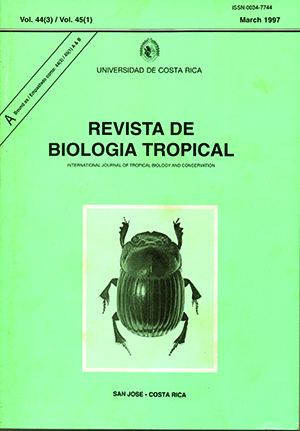Abstract
Laguna Hule, a caldera lake al 740 m above sea level is situated on the Atlantic slope of the Cordillera Volcánica Central in Costa Rica. The lake area is 56.9 ha. Ihe volume 7.8 x 10 m3 and the maximum depth 22.5 m. At the lime of the study (January February 1989) the boundary between the oxic and anoxic layer was at 10 m. i.e.. 33 % of the lake's volume was anoxic. Relatively low concentrations of H2S (up 10 4.1 umol 1' resp.) were present in the hypolimnion simultaneously with large amounts of Fe and Mn (114 and 21.5 Imol l' resp.), the thermocline was very weakly developed (Iotal temperature difference between surface and bnom water layer amounted 10 only 1.3°C). This small difference, the relatively high concentrations of ammonia and iron in the epilimnion and the low 0 2 saturation (81 %) of the surface layer indicme that, during or shonly before Ihe study time, a panial circulation of the lake had occluded causing a substantial entrainment of hypolimnetic water into the epilimnion. The mixing process did not produce a total circulation but Was probably the reason for The intrusion of small amounts o( 02 into layers blow lhe chemocline, which enabled the production of nitrite by nitrifying bacteria within the hypolimnion. On Feb 7 lh gross primary productivity was 2.74 g C m Id I and lh community respiration between surface and 6 m amounted 10 1.98 g Cm-2d-¡ It is concluded from the result of the present as well as from an earlier study (May 1979) and from comparisons with the nearby located Laguna de Río Cuarto, that the productivity panem of Laguna Hule is very much governed by its mixing behavior##plugins.facebook.comentarios##

This work is licensed under a Creative Commons Attribution 4.0 International License.
Copyright (c) 1996 Revista de Biología Tropical
Downloads
Download data is not yet available.


